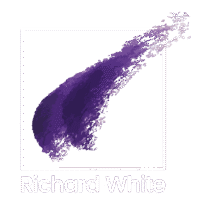Richard White MAEd/Psy MFA February 2025 ©
The arts in higher education are persistently undervalued, often treated as peripheral rather than integral to a well-rounded education. Despite extensive research, advocacy, and historical precedence demonstrating their profound impact on cognitive development, creativity, and interdisciplinary innovation, the challenge remains to persuade academic institutions to fully integrate the arts into broader curricula. The need for a holistic approach—one that merges the arts with disciplines such as mathematics, science, engineering, and technology—is not just desirable but essential for fostering a new generation of creative, adaptive thinkers.
Edward O. Wilson, in Consilience: The Unity of Knowledge, argues for the seamless integration of disciplines, an approach that aligns with the STEAM (Science, Technology, Engineering, Arts, and Mathematics) educational model. Chapter Ten of Consilience, titled “The Arts and Their Interpretation,” provides a compelling argument for why the arts should not be isolated from other fields of study but rather seen as a crucial element in the greater pursuit of knowledge. This essay will explore Wilson’s vision, research supporting arts integration, and the practical necessity of fostering consilience in higher education.
Edward O. Wilson’s Consilience: The Arts and Their Interpretation
Wilson asserts that the arts are not separate from the sciences but rather an extension of human cognitive evolution, deeply connected to biology and the natural world. In Chapter Ten of Consilience, he posits that the arts serve an evolutionary function, emerging from our need to interpret and shape our environment through symbolic representation. He writes:
“The arts are not just expressions of emotion but cognitive tools that have helped human beings survive by organizing our perceptions of reality.”
Wilson highlights that the arts, like science, seek to discover and communicate patterns—whether in nature, mathematics, or human emotion. He discusses how aesthetic experiences trigger neurological responses, creating meaning through symbolism and metaphor, which are essential to both artistic and scientific discovery.
Moreover, Wilson emphasizes that the artificial barriers between the arts and sciences hinder progress. By reuniting these disciplines, we can cultivate a richer understanding of the world. He calls for a “third enlightenment,” in which the humanities and sciences engage in deep dialogue, allowing for mutual enrichment. This consilient approach aligns with what many contemporary educators and advocates for STEAM education have been promoting—an interdisciplinary model that fosters creativity and problem-solving.
The Challenge of Academic Integration
Despite compelling arguments for integration, higher education often maintains a rigid disciplinary separation. Faculty members and administrators sometimes resist interdisciplinary approaches due to traditional academic structures, funding priorities, or misconceptions about the arts’ utility. Many universities still relegate the arts to elective status rather than recognizing them as foundational to education across disciplines.
This resistance is perplexing, given mounting research indicating the profound benefits of arts integration. A 2019 study from the Brookings Institution found that students engaged in arts education showed a 13% increase in standardized writing scores and improved social-emotional skills. Additionally, the National Endowment for the Arts has published extensive research demonstrating that arts exposure enhances creativity, critical thinking, and adaptability—skills essential in an unpredictable job market.
The Palm Beach State College (PBSC) STEAM luncheons, sponsored by Yvonne Boice, consistently emphasized the necessity of this interdisciplinary approach. These events fostered discussions on how consilience could shape education, advocating for a model that dissolves traditional academic silos in favor of an integrated curriculum.
The Arts and STEM: A Necessary Convergence
The benefits of integrating the arts with STEM disciplines are particularly evident in fields requiring innovation. Consider how visual artists collaborate with engineers to design user-friendly interfaces, how musicians influence mathematical modeling, or how architects rely on principles of physics and aesthetics to create functional structures.
Leonardo da Vinci, the quintessential example of consilience, seamlessly blended artistic mastery with scientific inquiry. His anatomical studies informed his paintings, while his engineering designs reflected his deep understanding of form and function. In the 21st century, fostering this same interdisciplinary spirit is vital.
The Future of Higher Education: A Call for Change
To prepare students for the complexities of the modern world, universities must adopt a more consilient approach. This means restructuring curricula to ensure the arts are not seen as supplementary but as integral to scientific and technological advancement. Strategies for achieving this include:
- Interdisciplinary Courses: Universities should develop programs where students engage in projects that merge arts with other disciplines, such as bio-art, mathematical visualization, and interactive design.
- STEAM-Based Research Initiatives: Funding should support interdisciplinary research that explores the intersection of art and science.
- Faculty Collaboration: Institutions must incentivize partnerships between departments, breaking down silos that isolate the humanities from STEM fields.
- Revised Accreditation Standards: Accrediting bodies should recognize and encourage interdisciplinary learning models as essential for 21st-century education.
The pressing need for consilience in higher education cannot be overstated. As Edward O. Wilson argues, the artificial divide between the arts and sciences is a modern construct, not an inherent truth. The arts are not merely decorative or expressive; they are cognitive tools that shape our understanding of the world. By embracing a holistic educational approach—one that integrates the arts with STEM fields—higher education can better prepare students to navigate an increasingly complex and interconnected world.
It is time to move beyond traditional academic divisions and recognize that the arts are not a luxury but a necessity. The young and open minds of the 21st century deserve an education that reflects the true unity of knowledge. The challenge is not whether consilience should be pursued—it is whether we, as educators and institutions, have the vision and courage to implement it.
Bibliography
- Brookings Institution. “The Arts and Student Achievement: A Review of Research.” 2019.
- National Endowment for the Arts. The Arts and Creativity in Education: A Research Review. 2020.
- Wilson, Edward O. Consilience: The Unity of Knowledge. New York: Knopf, 1998.
